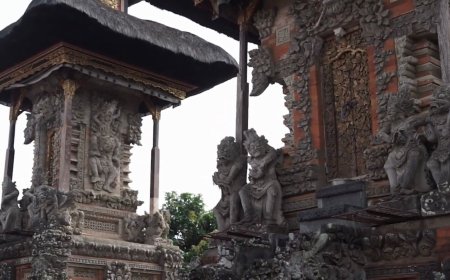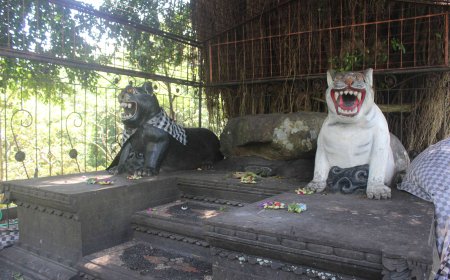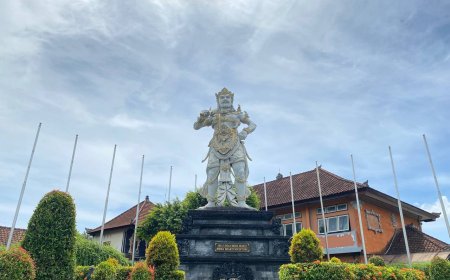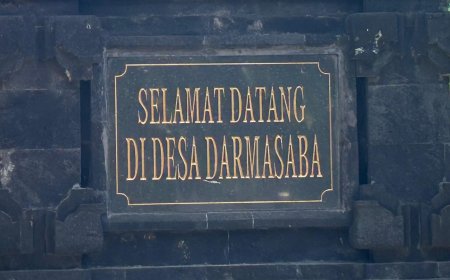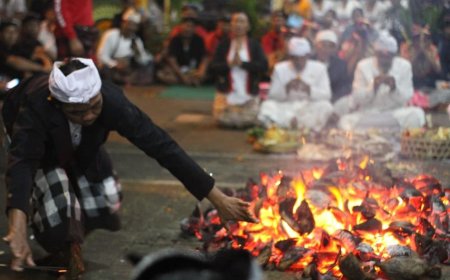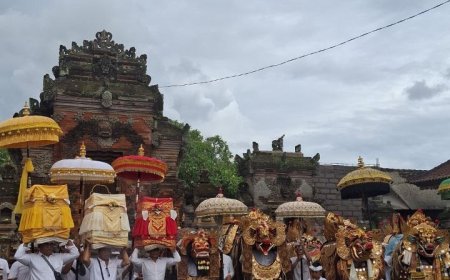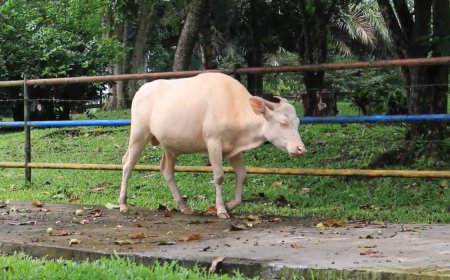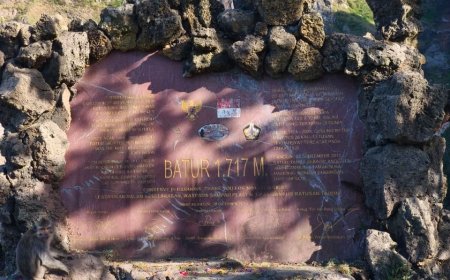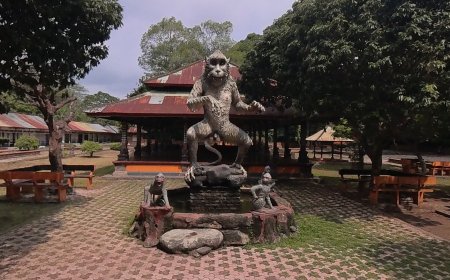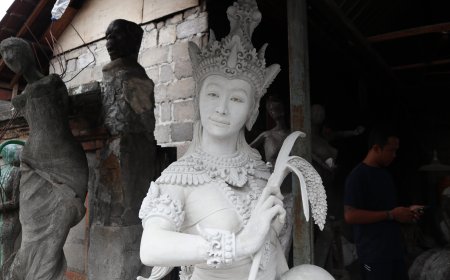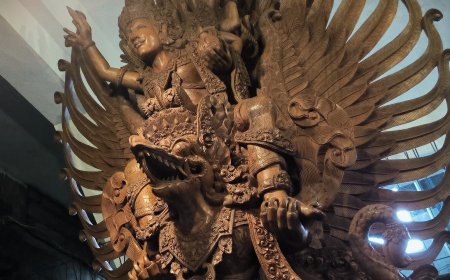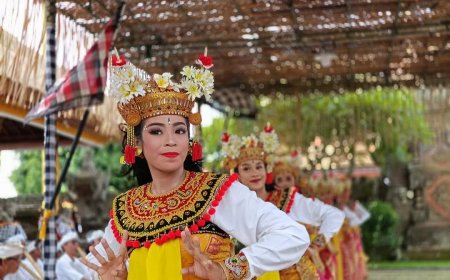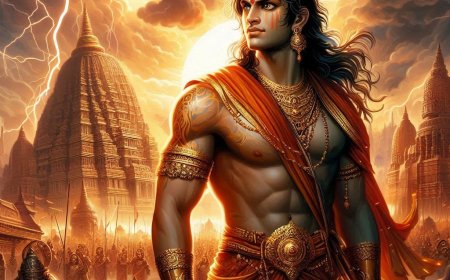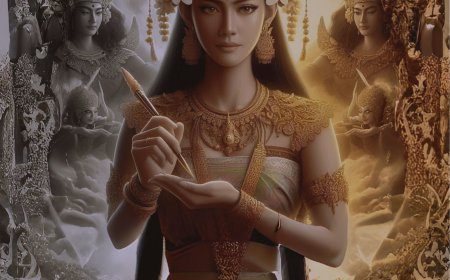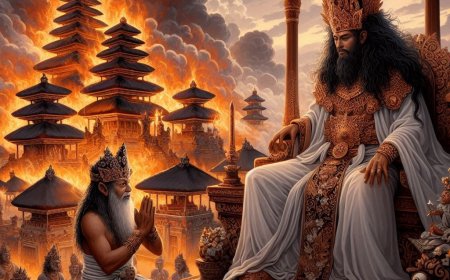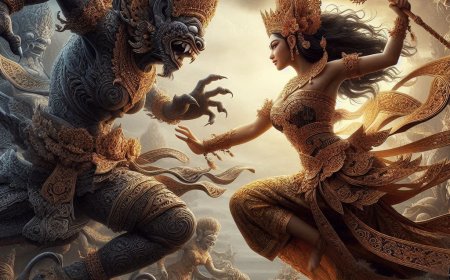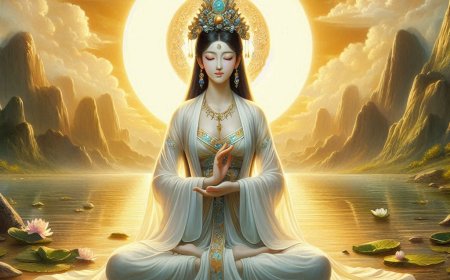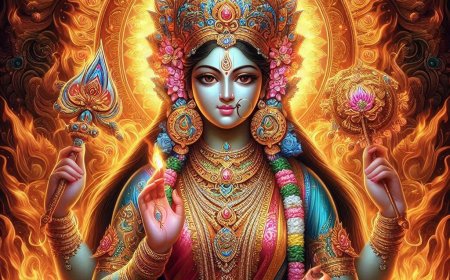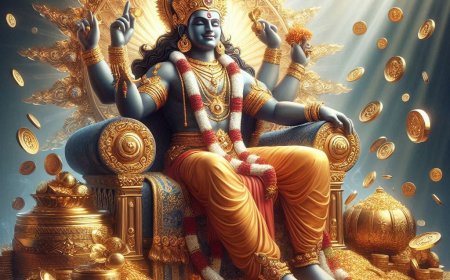Bhairava Avatara: The Beheader of The God Brahma
Lord Shiva created Bhairava to punish Brahma who lied in the test of the pillar of fire, claiming to be able to find its end. As a consequence, Bhairava cut off one of Brahma's heads, which later transformed into Chaturmukha, having four faces representing the four Vedas. This act taught the importance of truth and humility. Bhairava also became a symbol of protection and a reminder of the consequences of arrogance.
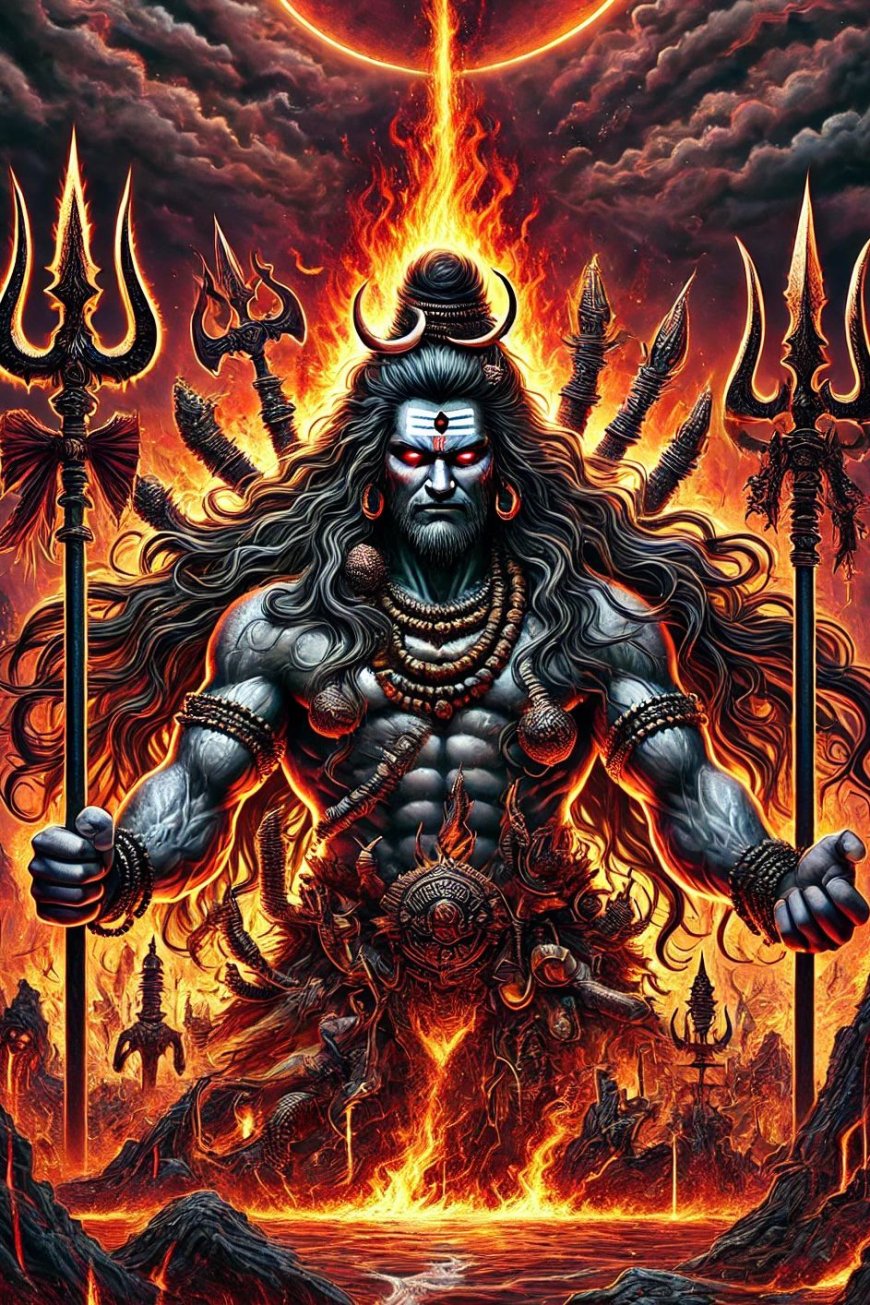
At the beginning of the creation of the universe, the Trimurti-Brahma, Vishnu, and Shiva-had an important role. Brahma created nature, Vishnu preserved, and Shiva destroyed for regeneration. Brahma, with his five faces, observed and created beings to populate the world. This story tells about the debate between Lord Mahavishnu and Lord Brahma, who each feel they have the most important role in the universe. Mahavishnu, the protector, claims to be supreme, while Brahma, the creator, also feels worthy of the highest position.
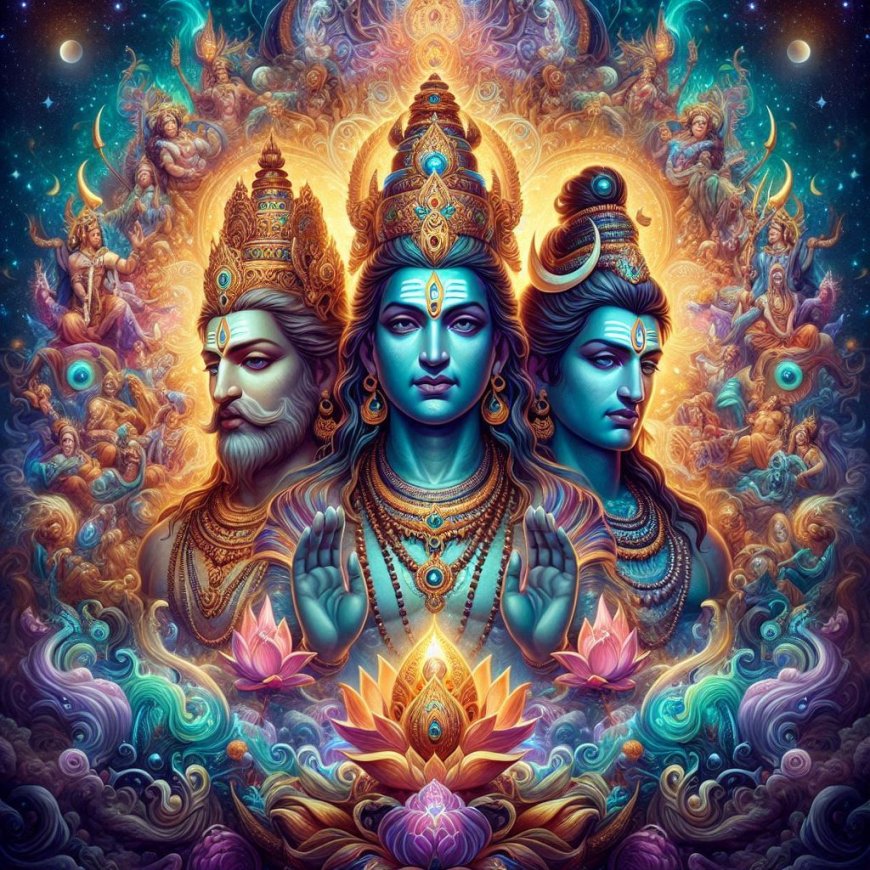
Ilustration Trimurti—Brahma, Vishnu, dan Shiva (Source: Privat Collection)
The conflict between Mahavishnu and Brahma heated up until a huge pillar of fire appeared that emitted tremendous light. A voice from heaven said that whoever found the tip or base of the pillar would become the supreme ruler. Mahavishnu and Brahma accepted the challenge. Mahavishnu transformed into a boar (Varaha) and began digging into the earth to find the end of the fire pillar. Brahma, full of pride, ignored the bottom of the pillar and focused on finding the top. Together with a swan, he flew towards the sky, confident that he could reach the top faster than Mahavishnu digging on earth.
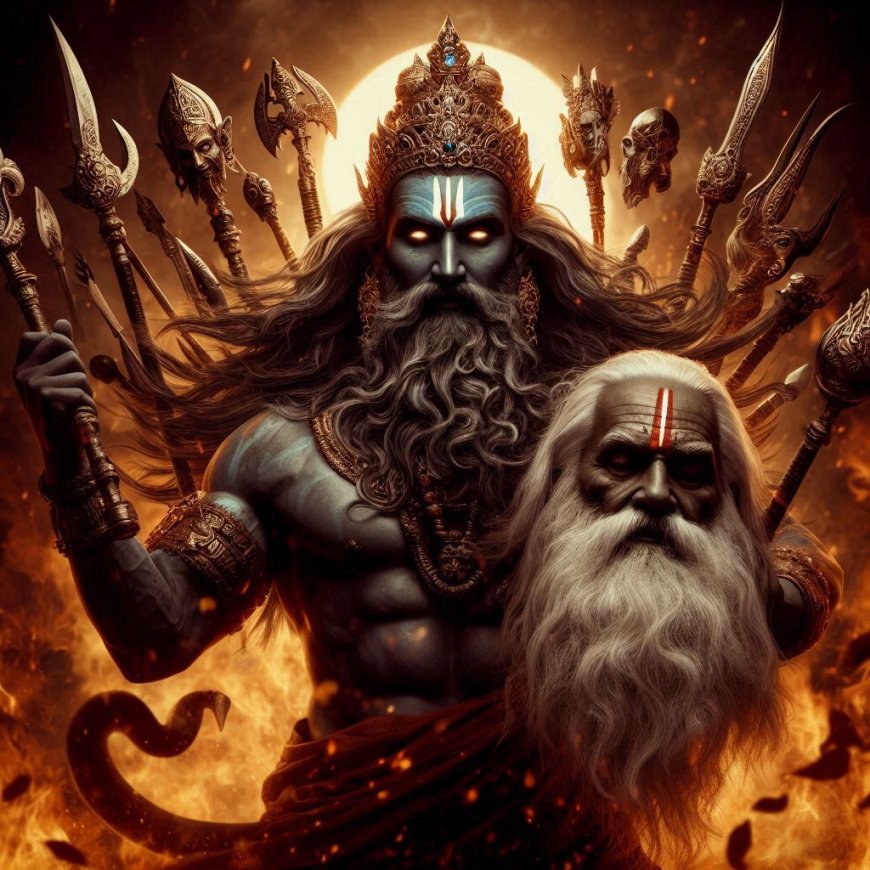
Ilustration Bhairava beheaded the God Brahma (Source: Privat Collection)
Mahavishnu, failed to find the end of the pillar, admitted his incompetence and returned. Meanwhile, Brahma lied, claiming to have reached the top of the pillar despite not finding it. Lord Shiva, angry at Brahma's lies, created Bhairava as a manifestation of his anger. Bhairava appeared in a terrifying form, Ugramurti, to punish Brahma. Bhairava removed one of Brahma's five heads, turning him from a Panchamukha (five-headed) to a Chaturmukha (four-headed). This action exposes Bhairava to the grave sin of Brahmahatya, which is one of the gravest sins in Hinduism. After removing Brahma's head, Bhairava felt guilty and sought forgiveness from Shiva. Shiva gave him the opportunity to atone by wandering, carrying a bowl of Brahma's skull, and soaking in holy places to cleanse the sin.
To accompany Bhairava, Shiva created Bhairavi, a woman of equal divine power. Together, they wander and make pilgrimages to holy places, begging with Brahma's skull bowl for penance. Despite visiting many holy places, Bhairava felt that his sins had not been erased. Shiva suggested that Bhairava go to Varanasi and take a dip in the Ganges River, which is believed to wash away all sins. Bhairava followed Shiva's advice, went to Varanasi, and took a dip in the Ganges with Bhairavi. Brahma's skull bowl was washed away, erasing his sins. The place is known as Kapalamochana Thirtha, which is believed to wash away the sins of Brahmahatya. Although Bhairava had atoned for his sins and experienced spiritual cleansing, he still harbored a ferocious nature. He fought against the gods in heaven and defeated Indra without the permission of Shiva.
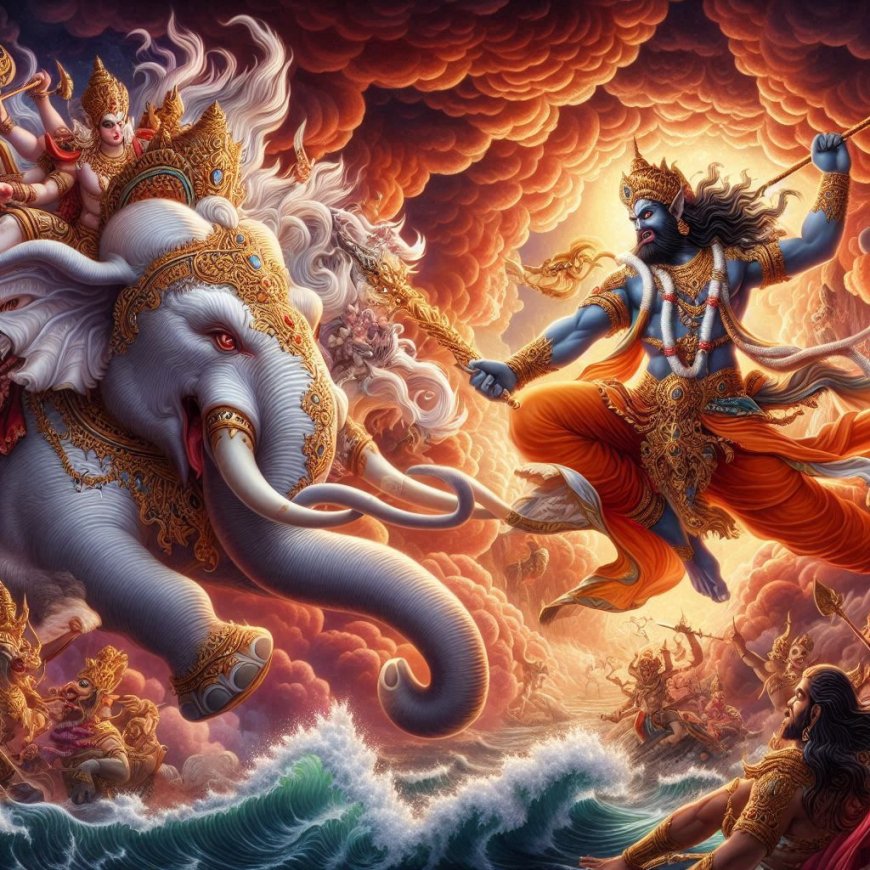
Ilustration of Bhairava fighting against the god Indra (Source: Privat Collection)

Ilustration Hindus people praying to Bhairava (Source: Privat Collection)
With such forgiveness, Bhairava is honored as the protector of cosmic balance and guardian against evil in Hinduism. His presence symbolizes the importance of maintaining the order of the universe and reminds devotees of the importance of humility. As an entity of dual power and character, Bhairava teaches that even in a violent nature, there is room for enlightenment and devotion. Thus, he is a revered figure in many Hindu rituals and traditions.
